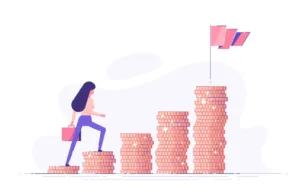Amid the COVID-19 economy, a tremendous divergence has emerged between the economics for different companies. We could categorize them in two groups, the “haves” and the “have-nots.” A relatively small group of companies are doing incredibly well — think grocery stores and video conferencing — while a significant portion of others are struggling to keep afloat.
How does this reality affect how we investors weather the storm?
For those index funds or completely passive investors out there, the good news is that you very likely have a portion of the “haves” in your portfolio. But you may also have a hefty amount of companies in the “have-not” category — even in the S&P 500.
This concept prompted me to think about investors in two different camps: passive, or pure index fund investors, and more active investors who have a definitive stock selection strategy.
I’m a big believer that deciding to get invested and doing so in the right way is hands down one of the greatest financial decisions we’ll ever make.
Investing is both an art and a science. The science piece is the math, data and understanding of the economy and the fundamentals of companies in the market. The art piece has everything to do with investing in a way that feels comfortable to you. This insulates you from getting thrown off track every time there’s a market hiccup.
One thing to remember is that, whether you’re still green or a seasoned investor, we all stomach risk differently. There’s a contingency of folks who are largely unfazed by market peaks and valleys — no matter how bad things get. This group, in my opinion, could keep it simple and stick with the S&P 500 and cash, or a total stock market index and cash, riding the waves while themselves remaining very much placid. These indexers are a group of mostly DIY investors, and they make up roughly 30% of the investing population.
That leaves about 70% of investors who need or seek some level of financial guidance and help. These are the folks who still may be able to tolerate the high highs and low lows, but they need a process. They need a plan that’s working in their best interest to feel comfortable, with an eye on their family financial goals. And it’s paramount that these investors have a strategy they can understand and rely on during market difficulties so they can feel a sense of ease — and not get thrown off track.
Now, to ask a barber if you need a haircut, “Wes, should I be using a financial adviser?” For the 70% I just mentioned, my answer is generally yes. I think there’s potentially an upside over the long term to have an advisory firm work with you to make sure you have both science and art on your side. Vanguard’s Advisor Alpha study has repeatedly shown that a strong advisory relationship can add between 2% and 3% per year to your bottom-line investments. Advisers add this value through investing, asset location, rebalancing, tax mitigation, financial planning, etc. (As an aside, make sure the firm you choose is a “fiduciary” firm, meaning they must act in your best interest.)
Now, there is a different kind of investor. This is the person who has a leg on both sides of the fence but is going it alone. Maybe that means they own an index fund or two, a spattering of sector or country specific ETFs, maybe a Latin America or Asia Pacific fund, and a handful of individual stocks. Now, all of a sudden, this DIY investor isn’t adhering to a pure index fund strategy; they’ve slowly evolved an investment strategy that’s cobbled together with many different pieces. It can quickly end up being a strategy that’s trying to pick winners and losers in a very haphazard way. This can be a dangerous place to be.
I believe you should choose either of the first two camps — be a DIY investor or a “DI Don’t” investor.
Being a pure index fund investor requires you to understand that, along with the great companies that typically bubble to the top, you’ll own companies that could be hanging by a thread. Remember, this is a strategy we know works pretty well over time — if you stick with it completely. And doing so requires a high degree of discipline.
When you begin adding different components that aren’t necessarily passive, you end up morphing your DIY strategy into a different one, and one that may very well end up lagging. The DIY investor should be very controlled and able to practice self-restraint as they watch the rise and falls of their indexes; they should remain almost a passive purist.
For the DI Don’ts, this type of investor could be well suited seeking out investment help that gives them a philosophy that feels right and that they can live with comfortably. Their adviser should strike a sensible balance of science and art that feels right for them, and that fits both their life goals and planning needs.
Bottom line: I’m a proponent of either DIY or DI Don’t, but not the nebulous space in between.
Read original AJC article here
This information is provided to you as a resource for informational purposes only. It is being presented without consideration of the investment objectives, risk tolerance or financial circumstances of any specific investor and might not be suitable for all investors. Past performance is not indicative of future results. Investing involves risk including the possible loss of principal. This information is not intended to, and should not, form a primary basis for any investment decision that you may make. The information contained in this piece is not considered investment advice or recommendation or an endorsement of any particular security. Further, the mention of any specific security is solely provided as an example for informational purposes only and should not be construed as a recommendation to buy or sell. Always consult your own legal, tax or investment advisor before making any investment/tax/estate/financial planning considerations or decisions.










